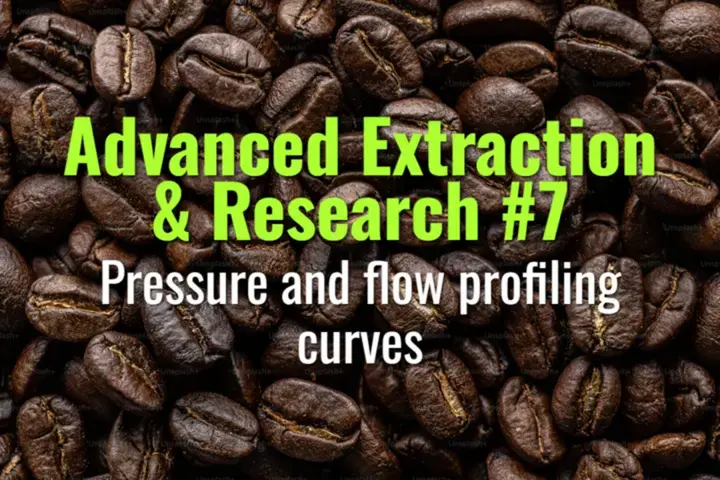Pressure and flow profiling curves
How pressure and flow profiling curves influence espresso extraction, and how baristas and researchers use them to optimize flavor and consistency.
- Coffee Basics Nerds
- 2 min read
Article 7 of 12 in Advanced Extraction & Research/

Pressure Profiling
- Definition: Controlling the pressure applied to the coffee puck over time during extraction.
- Traditional Machines: Fixed ~9 bar throughout.
- Modern Machines: Variable pressure, allowing stages:
- Preinfusion: Low pressure (~1–4 bar) wets puck, reduces channeling.
- Ramp-Up: Gradual increase to target pressure.
- Decline Phase: Lowering pressure near end to soften bitterness.
Flow Profiling
- Definition: Controlling the rate of water flow rather than pressure.
- Why It Matters: Flow dictates puck saturation, extraction balance, and flavor clarity.
- Flow-controlled extractions can maintain stable puck resistance and adapt to different roasts.
Profiling Curves
- Pressure Curve Example: Starts low (preinfusion), peaks at 9 bar, tapers down to 6 bar.
- Flow Curve Example: Gentle ramp (2 ml/s), steady mid-shot, decline near end.
- Combined Curves: Advanced machines link flow and pressure for adaptive control.
Impact on Extraction
- Higher Initial Pressure: Risks channeling.
- Gentle Preinfusion: Improves evenness.
- Tapered End: Reduces harsh, over-extracted compounds.
- Flow Consistency: Stabilizes extraction yield (EY) and reduces variability.
Research Insights
- Studies show profiling can alter extraction kinetics—faster solubles (acids) extracted early, slower ones (melanoidins, bitters) later.
- Profiling enables targeting specific sensory outcomes (e.g., more fruitiness vs more body).
Practical Use for Baristas
- Light Roasts: Benefit from longer preinfusion and higher peak pressure.
- Dark Roasts: Benefit from softer ramps and declining pressure tails.
- Consistency: Save and replicate successful profiles via machine software.
Summary
Pressure and flow profiling curves give baristas precise control over espresso dynamics. By shaping how water interacts with the puck across time, they unlock new flavor expressions, reduce channeling, and adapt recipes to roast style and customer preference.
You might also like:
- Tags:
- Extraction Yield
- Flavor Clarity
- Light Roasts
- Dark Roasts
- Water Flow
- Sensory Outcomes
- Reduces Channeling
- Yield Ey
- Extraction Balance
- Pressure Flow
- Flow Profiling
- Precise Control
- Roast Style
- Puck Resistance
- Coffee Puck
- Low Pressure
- Roasts Benefit
- Maintain Stable
- Balance Flavor
- Pressure Applied
- Profiling Definition
- Impact Extraction
- Modern Machines
- Reduce Channeling